Along with Athens, Sparta was one of the two most famous and powerful Greek city-states of classical antiquity. From the heroic tale of the stand of King Leonidas and the 300 Spartans at Thermopylae, to the historical accounts of Sparta’s success against Athens in the Peloponnesian War, to the stories of legendary figures such as Helen of Troy and the Dioscuri, Sparta played a very important role in the history and culture of ancient Greece for many centuries.
The small but pleasant modern town of Sparti was built over the site where the ancient city once stood. As the Spartans were not nearly as interested in monumental architecture as the Athenians, ancient Sparta was never the grand spectacle that Athens was, and very little of the little that was there has survived. As a result, many have dismissed Sparta as not worth visiting, and people often ignore the ruins of ancient Sparta in favor of the better preserved medieval ruins of the nearby abandoned former Byzantine capital of Mystras, just 6 km west of the town. However, we believe that there are some interesting things to see of the ancient city that was once one of the most dominant cities of Greece.
The main archaeological site includes several buildings of ancient Sparta’s acropolis, agora, and theater. The first building you come to is the 2nd-century-CE Roman stoa, which was part of the agora during the Roman period.
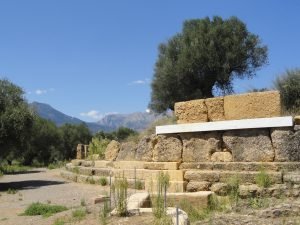
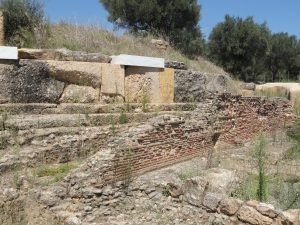
To the north are the ruins of the rest of the ancient agora. Prominent among them is what is left of a another stoa that was part of the agora. This may be the stoa that the ancient travel writer Pausanias calls “the Persian Colonnade,” which he says featured statues of Persian commanders who were defeated in battle by the Greeks (III.11.3).
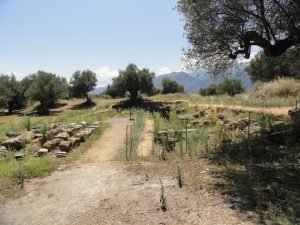
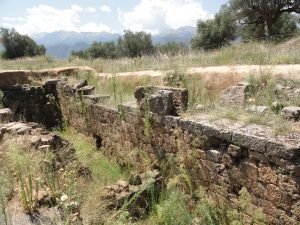
Following the path west along the northern edge of the acropolis takes you past a late Roman basilica.
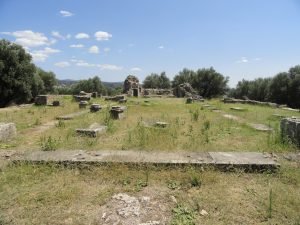
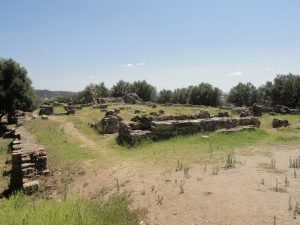
Next to it is another late Roman building, known as “the Two-niched Building.”
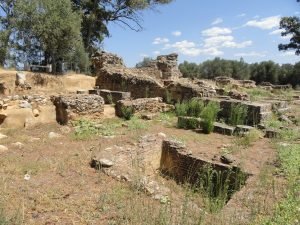
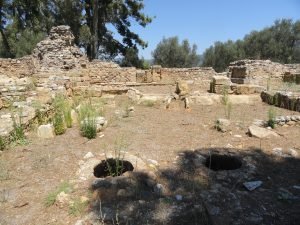
West of the Roman buildings are what is left of the Sanctuary of Athena Chalkioikos. Pausanias relates the story of how the statue of this sanctuary was installed by Odysseus (III.12.4). Whatever personalities may have been involved, the site does indeed date back to Mycenaean times. The sanctuary played a very important role in the customs and rituals of Spartan public life. Also, in his History of the Peloponnesian War, Thucydides tells us that it was in this sanctuary that the Spartan regent Pausanias (no relation to the travel writer), who commanded the Greek forces against the Persians at the Battle of Plataea in 479 BCE, sought refuge after being accused of treason. He was locked inside to die, only to be taken out to die outside so as not to pollute the sanctuary.
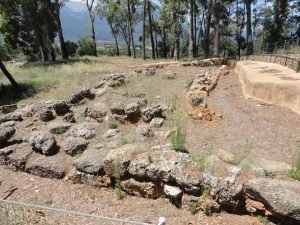
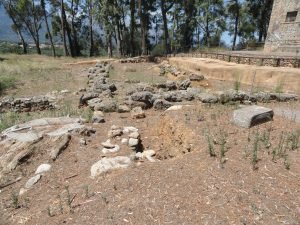
Just south of the Sanctuary of Athena, there is another ancient stoa, and just beyond that, at the southwestern corner of the site, stand the ruins of the theater, which was built into the southern slope of the acropolis. As it dates to the 1st century BCE, it is not certain whether the theater that existed in Sparta in classical times was in the same location of the later theater or elsewhere. However, it was certainly this theater that Pausanias visited in the 2nd century CE, and he said it was made of marble, but almost all of the marble is gone.
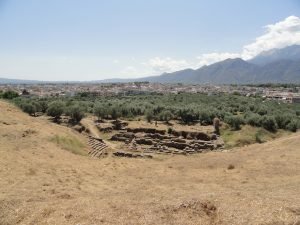
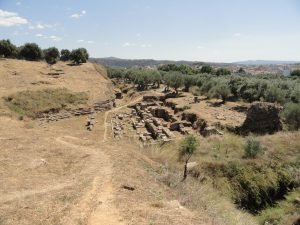
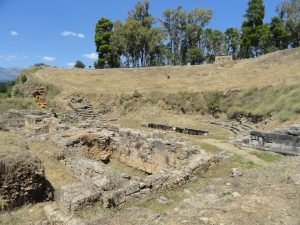
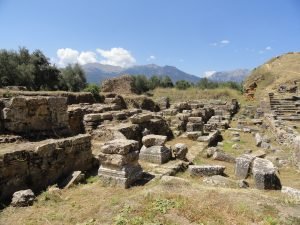
One marble section which has survived is the east parados, which bears an extensive inscription.
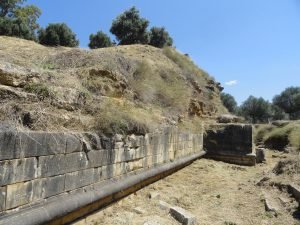
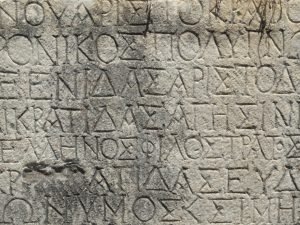
In addition to those at the main archaeological site, there are also several other structures which have been excavated. A sanctuary was excavated 500 meters northeast of the acropolis. Although Pausanias tells us of many sanctuaries he visited in Sparta, it is unknown which sanctuary this was. As a result, it is simply signposted as “Ancient Sanctuary.”

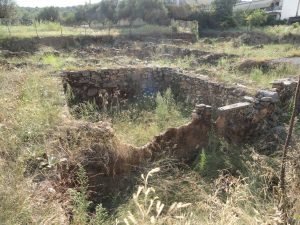
However, one sanctuary that Pausanias wrote about has been identified 400 meters southeast of the unidentified sanctuary. It is known as the Sanctuary of Artemis Orthia, and Pausanias tells us that the Spartans believed the wooden idol worshiped there was the one stolen by Orestes and Iphigenia from the Taurians. Pausanias notes that this account contradicts the Athenians, who say the idol was kept at Brauron and was stolen by the Persians during their invasion of Attica in 480 BCE, but he makes the case for the Spartan idol’s authenticity. We also know that it was at the Sanctuary of Artemis Orthia that young Spartan boys went through a rite of initiation which included having them run a gauntlet of whips.

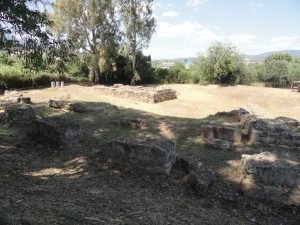
There is another structure 300 meters north of the unknown structure. It was an altar found next to the Eurotas River, and so it is called the “Eurotas altar.” However, it has not been definitively identified.
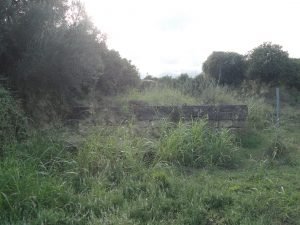
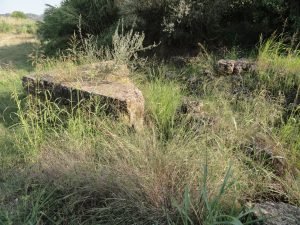
Southeast of the city–and on the opposite bank of the Eurotas River–is a structure which is called the Menelaion. Pausanias reports that in his day there was some debate as to whether King Menelaus and his wife Helen of Troy were buried there, but in any case one of the structures here was used as a shrine to honor the royal couple of Homeric fame. The suppliants had good reason to assume the site was connected to the famous pair as it is clear that this was the site of Sparta’s palace complex in Mycenaean times. In other words, if Helen and Menelaus were indeed historical figures, this is where they almost certainly would have lived.
The Archaeological Museum of Sparta is located in the center of the city. It is a small museum consisting of just a few rooms, but those rooms are filled with many treasures from ancient Sparta, including the famous classical statue of the smiling Spartan hoplite found in the Sanctuary of Athena Chalkioikos on the acropolis.
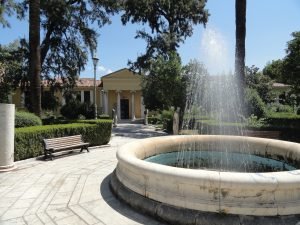
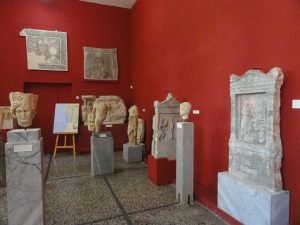

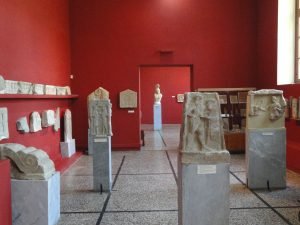
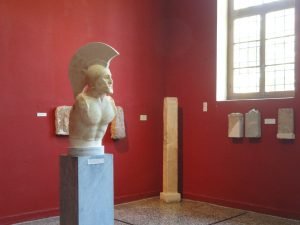

 To remind visitors and residents alike of the legacy of the city’s ancient past, there are two significant modern statues of ancient Spartan heroes in town. The most prominent one is of Leonidas, the king who died alongside his 300 compatriots in 480 BCE at the mountain pass at Thermopylae during the invasion of the Persian King Xerxes. Pausanias tells us that his tomb was located not far from this spot (“opposite the theater” [III.14.1]), but it has never been found. His statue stands at the north end of town in front of the municipal stadium. At the top of the pedestal are inscribed the famous two words he is said to have given in response to the Persian demand that he and his men lay down their weapons: ΜΟΛΩΝ ΛΑΒΕ, “Come and get them.”
To remind visitors and residents alike of the legacy of the city’s ancient past, there are two significant modern statues of ancient Spartan heroes in town. The most prominent one is of Leonidas, the king who died alongside his 300 compatriots in 480 BCE at the mountain pass at Thermopylae during the invasion of the Persian King Xerxes. Pausanias tells us that his tomb was located not far from this spot (“opposite the theater” [III.14.1]), but it has never been found. His statue stands at the north end of town in front of the municipal stadium. At the top of the pedestal are inscribed the famous two words he is said to have given in response to the Persian demand that he and his men lay down their weapons: ΜΟΛΩΝ ΛΑΒΕ, “Come and get them.”
There is also a statue of Lycurgus, the figure (who may or may not have been a real person) who is credited with codifying Spartan law and organizing Spartan society along the militaristic lines it became famous for. The statue is in front of Evangelistrias Park on the west side of town.
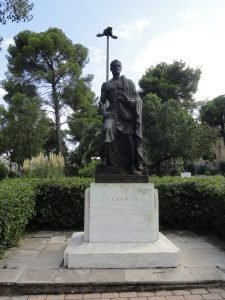 Tips for the Visitor
Tips for the Visitor
There are several buses a day that run between the Kifissou bus terminal in Athens and the bus station in Sparti, which is on the east side of town. The journey takes about 3.5 hours and costs just under 20 euro each way.
The museum and the acropolis/theater archaeological site are open during normal archaeological site hours. Entrance to the archaeological site is free, but tickets to the museum cost 2 euro. The Sanctuary of Artemis Orthia is also gated but is never open. You can, however, easily view and photograph the site through the fence. The site generically labeled “ancient sanctuary” also has a fence around it and can be viewed from outside the fence. The Eurotas altar is not gated, but it is very much off the beaten track, and so getting there requires wandering through isolated fields.
The Menelaion is a 6-km drive or hike from the north end of town. To get there, you need to cross the Eurotas north of Sparti, and then head south along the country road along the east side of the river. There is a turnoff for the road that will take you the last 1 km to the site.
Location Map
